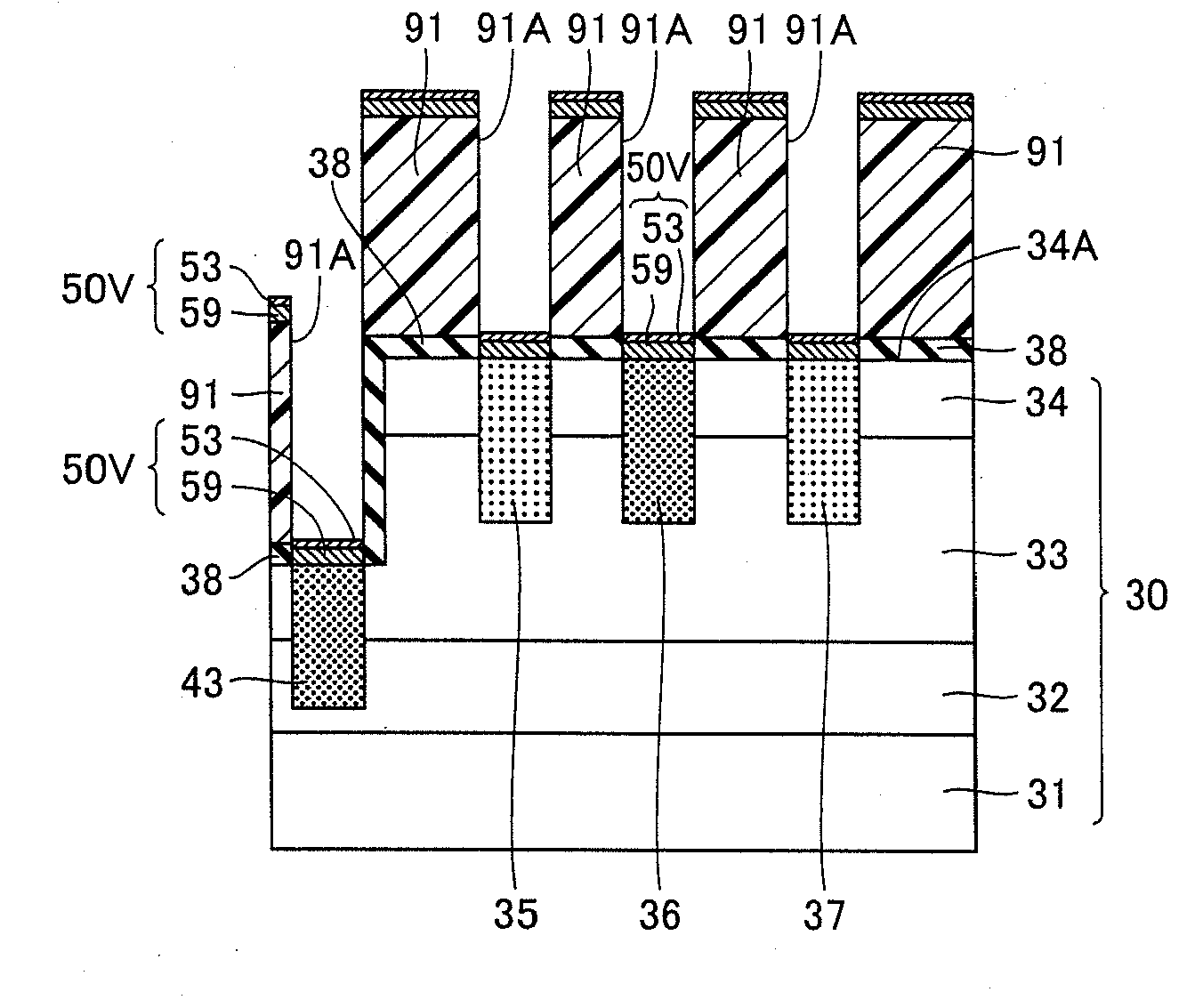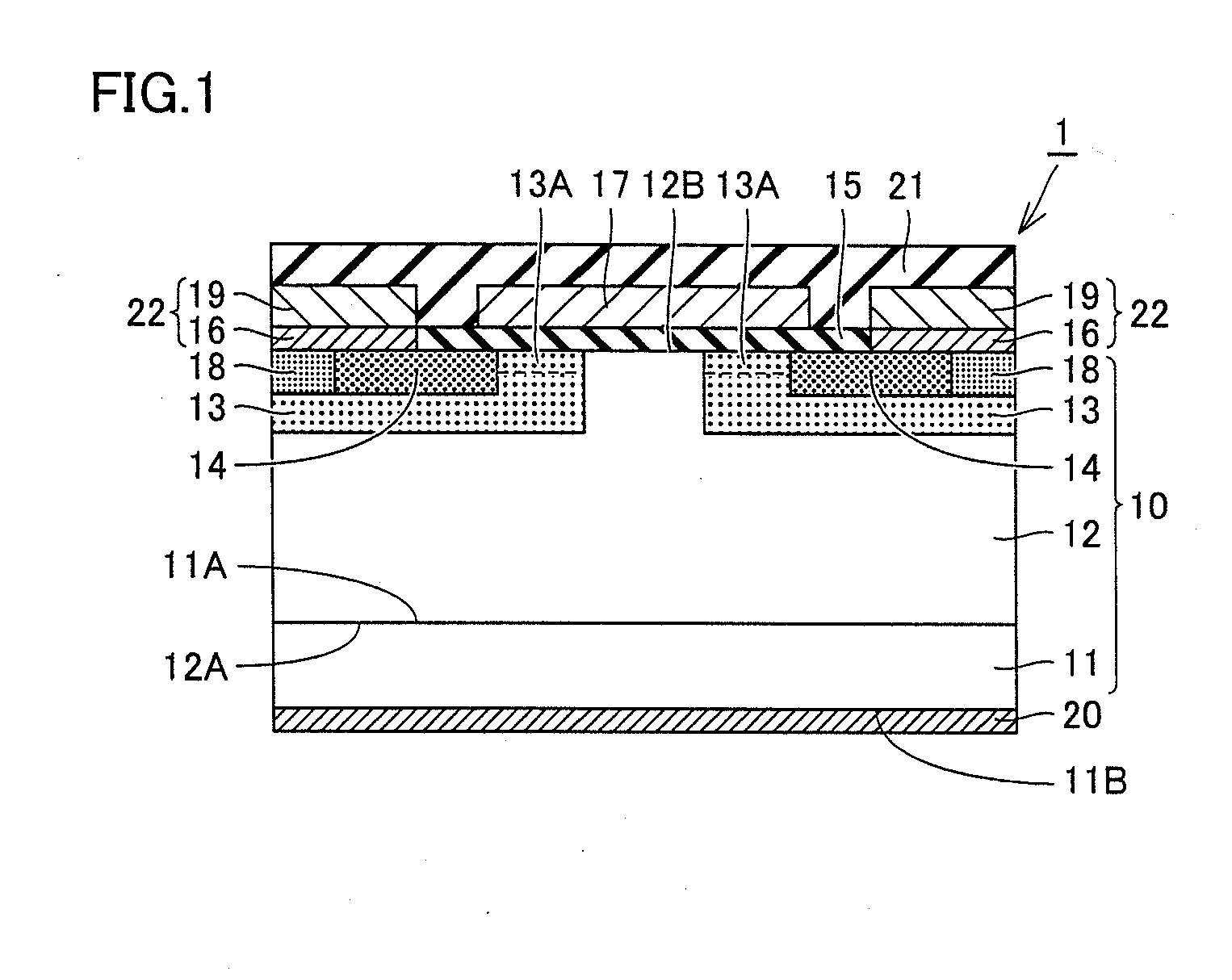Method of manufacturing silicon carbide semiconductor device
- Summary
- Abstract
- Description
- Claims
- Application Information
AI Technical Summary
Benefits of technology
Problems solved by technology
Method used
Image
Examples
first embodiment
[0040]Initially, a construction of a MOSFET (Metal Oxide Semiconductor Field Effect Transistor) in the present embodiment will be described.
[0041]Referring to FIG. 1, a MOSFET 1 (a silicon carbide semiconductor device) has a silicon carbide substrate 10. Silicon carbide substrate 10 includes an n+ substrate 11, an n− SiC layer 12, a p body 13, an n+ source region 14, and a p+ region 18.
[0042]N+ substrate 11 is a substrate composed of silicon carbide (SiC) and having an n conductivity type. N+ substrate 11 contains an n-type impurity (an impurity having the n conductivity type) such as N (nitrogen) at high concentration.
[0043]N− SiC layer 12 is a semiconductor layer composed of SiC and having the n conductivity type. N− SiC layer 12 is formed on one main surface 11A of n+ substrate 11, for example, to a thickness of approximately 10 μm. Examples of n-type impurities contained in n− SiC layer 12 include N (nitrogen), and an impurity is contained at concentration lower than concentrati...
second embodiment
[0076]A construction of a JFET (junction field effect transistor) in the present embodiment will initially be described.
[0077]Referring to FIG. 10, a JFET 3 (a silicon carbide semiconductor device) is similar in construction of an ohmic contact electrode to MOSFET 1 in the first embodiment above, and achieves similar effects. Specifically, JFET 3 has a silicon carbide substrate 30. Silicon carbide substrate 30 has an n-type substrate 31, a first p-type layer 32, an n-type layer 33, and a second p-type layer 34. N-type substrate 31 is composed of SiC and has the n conductivity type. First p-type layer 32 is formed on n-type substrate 31. N-type layer 33 is formed on first p-type layer 32. P-type layer 34 is formed on n-type layer 33. First p-type layer 32 can have a thickness of approximately 10 μm and concentration of a p-type impurity of approximately 7.5×1015 cm−3. For example, n-type layer 33 can have a thickness of approximately 0.45 μm and concentration of an n-type impurity of...
third embodiment
[0107]In the present embodiment as well, MOSFET 1 substantially the same as in the first embodiment is manufactured. Initially, as in the first embodiment, in gate insulating film formation step S70 (FIG. 2), gate oxide film 15 (insulating film) is formed.
[0108]Referring to FIG. 19, in an Al—Si alloy film formation step S82 (FIG. 18), an alloy film 59 made of an alloy containing Al atoms and Si atoms is formed. Namely, alloy film 59 is formed on second main surface 12B and on the main surface of n+ substrate 11 opposite to n− SiC layer 12. Preferably, the alloy film is formed with sputtering using a sputtering target 99. Sputtering target 99 is made of an alloy containing Al atoms and Si atoms.
[0109]Referring to FIG. 20, then, in a Ti film formation step S83 (FIG. 18), a Ti film 53 is formed on alloy film 59. Thus, a stack film 50V having alloy film 59 and Ti film 53 is formed.
[0110]Referring further to FIG. 21, then, as a result of removal of resist film 91, stack film 50V on resis...
PUM
 Login to View More
Login to View More Abstract
Description
Claims
Application Information
 Login to View More
Login to View More - R&D
- Intellectual Property
- Life Sciences
- Materials
- Tech Scout
- Unparalleled Data Quality
- Higher Quality Content
- 60% Fewer Hallucinations
Browse by: Latest US Patents, China's latest patents, Technical Efficacy Thesaurus, Application Domain, Technology Topic, Popular Technical Reports.
© 2025 PatSnap. All rights reserved.Legal|Privacy policy|Modern Slavery Act Transparency Statement|Sitemap|About US| Contact US: help@patsnap.com



